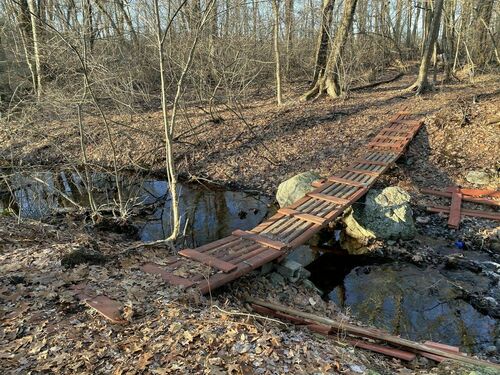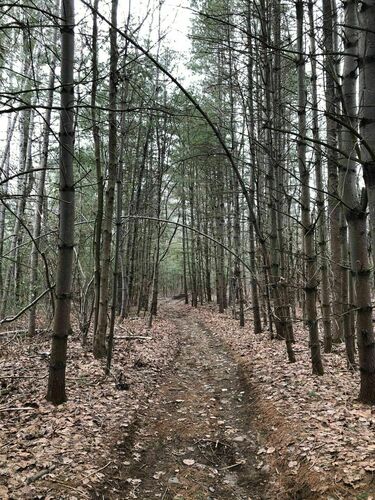TEN MILE RIVER RAMBLES
BY DON DOUCETTE
In simple terms, Attleboro’s Oak Hill plopped randomly from the last great glacier – a heap of glacial soils forming Attleboro’s highest elevation – and during time, a forested land form of dazzling natural beauty.
And so…during my early years, was a familiar promontory seen from surrounding communities as a singular iconic signature of Attleboro. The beautiful wilds of nearby Locust Valley and the surrounding meander of Thacher Brook formed a natural fairyland table setting.

A number of long-established forested trails of unknown origin led to Oak Hill’s summit – my own mother told stories of nostalgic family walks on Oak Hill when she was a girl – and attended Saint Joseph’s School on Maple Street in Attleboro and her most enjoyable walking route to school from Oak Hill Avenue passed through the Locust Valley wilderness.

I’d guess at this point in time, the degrading of Oak Hill began circa. the 1960s and beyond – and still so.
Initially, not many dwellings fronted Oak Hill along Locust Street and Oak Hill Avenue – Oak Hill Dairy Farm was functioning and dairy cows grazed along Oak Hill Avenue. Joe Mello had cows off Locust Street and Jack Gaffney’s dairy cows grazed beyond the golf links and over to South Main Street. The golf links itself was the former Wendall family Locust Valley Dairy and the original Leach’s Barn was Rick Bauer’s Dairy actively functioning on Locust Street as I played as a kid in that cow barn and in those cow-plopped pastures.
It began with much gravel being strip mined at the eastern approach to Oak Hill and a later attempt to excavate the hill itself – a heavy machine run to the top, an ugly scar bulldozed in the summit forest. Public controversy and work stoppage – the ugly north slope scar visible for years from the upper floors of Sturdy Memorial Hospital, downtown.
Gradual housing development around the hill’s western and southern flanks, the demise of the surrounding rural setting – fragmentation of the forest surround. The building of a needed City standpipe at the summit including its access road on the eastern slope – a gashing wound.
And then the much needed Wamsutta School complex, now a serious western flank wound along Locust Street and the resulting fragmentation of a mature beech forest, ancient walking paths obliterated, including some ancient native foot trails, the near obliteration of an active vernal pool, probably saved through State inventory at the bell…and future survival in doubt.
And today…we are left with a remaining heap of what? What will become of it all?
This Oak Hill – Locust Valley landscape has been systematically torn apart, hokis-polkus. Jack Gaffney’s Farm is an ugly scar a result of the gravel strip mining – the golf links, an ugly weed patch. Erosion along the flanks of Oak Hill from uncontrolled dirt biking – increased edge habitat now admitting sunlight disproportionately and encouraging invasive plants to thrive wholesale in place of a once pristine native forest. ‘Tis collective mis-managment and clouded forward thinking and planning, and after all “the official decision making” has stroked and falsely eased the community’s veiled concerns with such “far reaching wisdom” – what’s next?
It’s never too late, nature is passionately forgiving. Question is, are we ready as a community to seriously roll our sleeves and with what’s remaining of it all, responsibly allow nature to properly heal?
Are we really ready?
Don Doucette
“Ten Mile River Rambles
Friends of the Ten Mile and Bucklin Brook
Citizens of the Narragansett Basin
